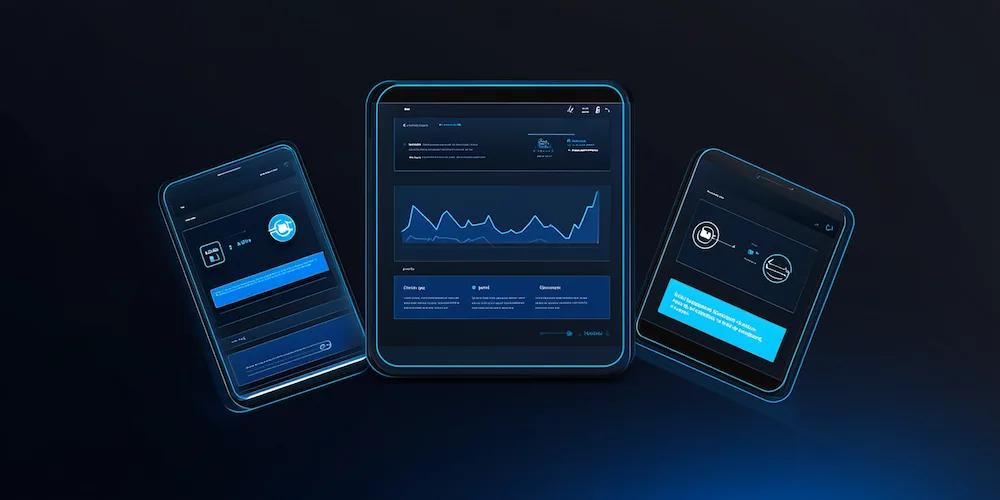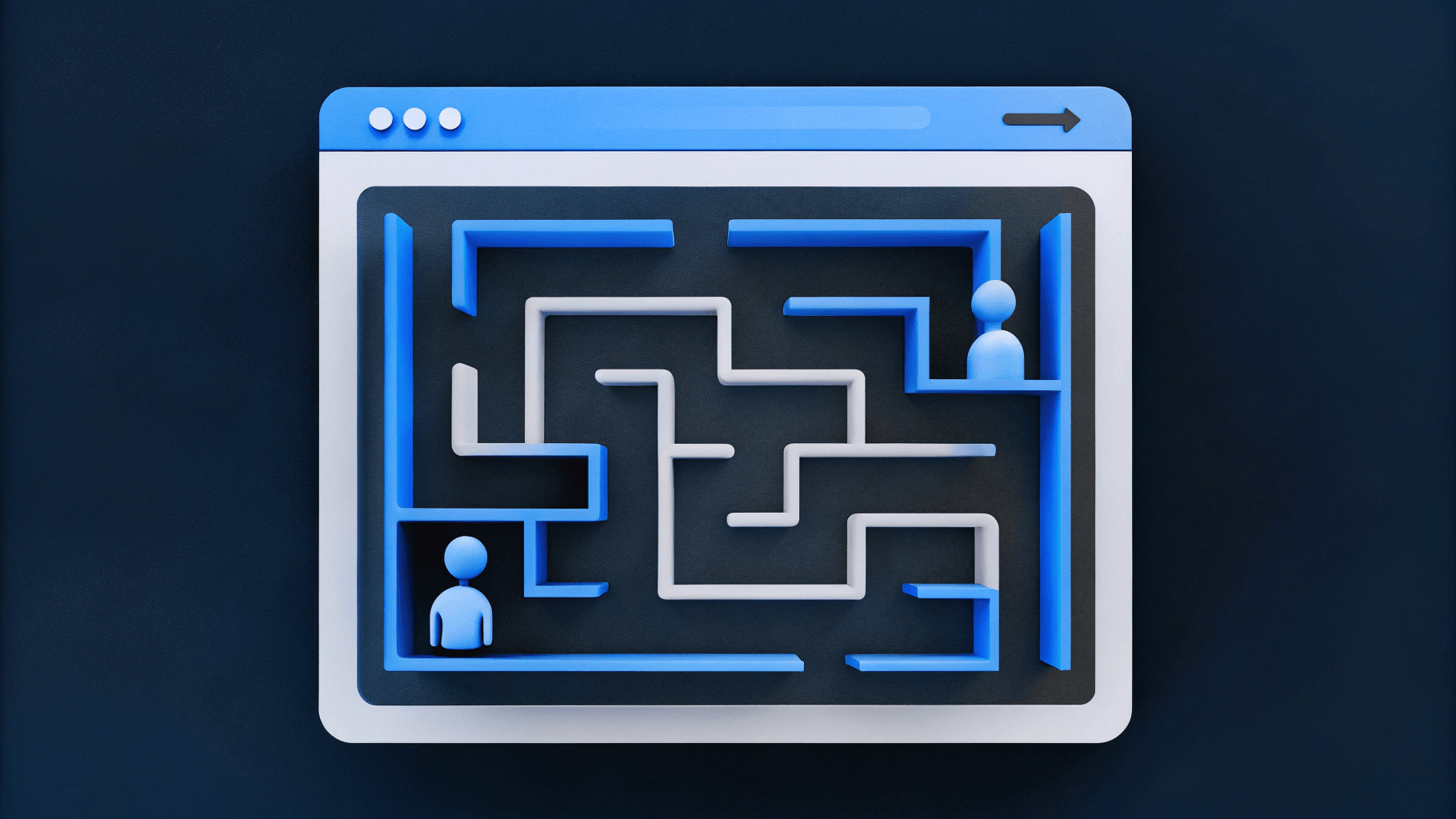80% of users are willing to pay more for a better user experience. This showcases the lengths to which an average user will go to provide themselves with an intuitive, helpful and clear digital surroundings.
If you’re developing MedTech products, understanding how to create effective med tech UX design is crucial. It’s not just about making things look good; it’s about ensuring usability, safety, and satisfaction.
In brief:
- MedTech UX should balance usability with regulatory compliance, addressing safety and effectiveness requirements.
- Accessibility is key - designers should ensure inclusivity for users of varying abilities and technical proficiencies.
- Testing and feedback are essential to create user-centered designs that reduce errors in medical settings.
- MedTech interfaces benefit from simplicity, ensuring clear and actionable guidance for healthcare professionals and patients.

What is MedTech UX Design?
MedTech UX design refers to the process of designing quality user interfaces and experiences for medical technology products. This includes everything from medical devices and diagnostic tools to healthcare software and patient management systems.
The goal of UX design is to make these products intuitive and user-friendly for both healthcare professionals and patients.
UX in medical technology ensures that devices and systems are not only functional but also easy to use. This is vital because complex or confusing interfaces can lead to errors, which in a healthcare setting can have serious consequences.
A well-designed UX can improve the efficiency of medical professionals, reduce the likelihood of mistakes, and enhance patient satisfaction. Key goals of MedTech UX design include improving usability, ensuring safety, and enhancing the overall user experience.
5. UX Best Practices for MedTech
Adopting best practices can make a significant difference in your product's success.
1. Intuitive Navigation and Clear Hierarchy
You need to ensure that users can find what they need quickly and easily. Intuitive navigation, using mega menu designs, and a clear hierarchy are key.
- Use a straightforward menu structure that guides users through the interface without confusion.
- Prioritize important functions and place them where users expect to find them.
- Employ visual cues like color, size, and spacing to highlight critical elements and create a logical flow.
This approach reduces cognitive load, allowing users to focus on their tasks without unnecessary distractions.
2. Consistent Design Patterns
Consistency in design patterns helps users feel comfortable and confident when using your product.
- Stick to a uniform style for buttons, icons, and other interface elements. This consistency makes it easier for users to learn and remember how to interact with the system.
- Use a design system or style guide to maintain uniformity across different screens and features.
Consistent design patterns not only enhance usability but also create a cohesive and professional look for your MedTech website.
3. Effective Onboarding and User Guidance
Effective onboarding and user guidance are vital for helping users get up to speed quickly.
- Provide clear, step-by-step instructions during the initial setup and first use.
- Use tooltips, pop-ups, and interactive tutorials to guide users through key features and functions.
- Offer contextual help that users can access whenever they need assistance.
This approach ensures that users can start using your product efficiently without feeling overwhelmed or frustrated.
4. Error Prevention and Recovery
Preventing errors and providing clear recovery options are important for maintaining a smooth user experience.
- Design your interface to minimize the chance of user errors. Use input validation to catch mistakes before they cause problems.
- Provide clear, actionable error messages that help users understand what went wrong and how to fix it.
- Include undo and redo options to allow users to correct mistakes easily.
This approach reduces frustration and helps users feel more in control.
5. User Testing And Iteration
User testing and iteration are fundamental to creating a successful MedTech product.
Conduct regular usability tests with real users to identify pain points and areas for improvement. Use this feedback to make iterative changes and refine the design. A/B testing can help you compare different design options and choose the most effective one. It can also help you improve CRO with UX design.
Continuous user testing and iteration ensure that your product evolves to meet user needs and expectations, leading to a better overall experience.
4 Common Challenges in MedTech UX Design
The journey to create an effective MedTech UX is riddled with challenges that can keep you up at night.
1. Complex Workflows and User Needs
MedTech products often involve intricate workflows that must cater to various user needs. Healthcare professionals, such as doctors and nurses, require interfaces that allow them to perform tasks quickly and accurately. These tasks can range from patient data entry to complex diagnostic procedures.
The challenge lies in designing a system that simplifies these workflows without sacrificing functionality. You need to ensure that each step in the process is intuitive and that users can easily navigate through the system, even under pressure. And it's not impossible. Different SaaS product page design examples are available for you to witness how all this can be done.
2. Regulatory Compliance Requirements
In the MedTech industry, regulatory compliance is non-negotiable. Products must adhere to strict guidelines set by regulatory bodies like the FDA or EMA. These regulations ensure that medical devices and software are safe and effective.
However, meeting these requirements can complicate the design process. You must integrate compliance features without making the user experience cumbersome. This involves thorough documentation, audit trails, and ensuring that the interface supports necessary regulatory checks.
3. Designing For Diverse User Groups
MedTech products serve a wide range of users, from highly trained medical professionals to patients with little technical knowledge. Designing for such a diverse audience presents unique challenges. You need to create interfaces that are both sophisticated enough for experts and simple enough for novices.
This requires a deep understanding of user personas and the ability to balance complexity with simplicity. The design must be adaptable, providing different levels of information and functionality based on the user's role and expertise.
4. Dealing With Sensitive Health Data
Handling sensitive health data is a significant challenge in MedTech UX design. You must ensure that data is secure and that privacy is maintained at all times. This involves implementing robust security measures, such as encryption and secure access controls.
Additionally, the design must comply with data protection regulations like HIPAA or GDPR. You need to create an interface that allows users to access and manage data efficiently while ensuring that sensitive information is protected from unauthorized access.

5 UX Design Strategies for MedTech That Experts use
Addressing these challenges requires a strategic approach to UX design.
1. User Research and Personas
Understanding your users forms the foundation of effective MedTech UX design.
Begin with comprehensive user research for UX to gather insights into the needs, behaviors, and pain points of your target audience. Conduct interviews, surveys, and usability tests to collect qualitative and quantitative data.
Use this information to create detailed user personas representing different user groups, such as doctors, nurses, and patients. These personas help guide design decisions, ensuring the final product meets the specific needs of each user type.
2. Simplifying Complex Workflows
MedTech products often involve intricate workflows. Simplifying these workflows improves efficiency and reduces the potential for errors.
- Map out each step of the user journey to identify bottlenecks and areas of confusion.
- Streamline processes by removing unnecessary steps and automating repetitive tasks.
- Use clear visual cues and intuitive navigation to guide users through complex procedures.
Simplified workflows not only enhance usability but also improve overall user satisfaction.
Accessibility Considerations
Accessibility ensures that MedTech products are usable by everyone, including those with disabilities.
- Design interfaces that comply with accessibility standards, such as WCAG.
- Use high-contrast colors, large fonts, and simple language to make content readable.
- Implement keyboard navigation and screen reader compatibility for users with visual impairments.
- Consider the needs of elderly users, who may have limited dexterity or cognitive abilities.
Accessible design not only broadens your user base but also enhances the overall user experience.
Data Visualization Techniques
Effective data visualization helps users interpret complex medical data quickly and accurately.
Use charts, graphs, and dashboards to present information in a clear and concise manner. Interactive elements, such as filters and drill-down options, allow users to explore data in more detail.
Ensure that visualizations are intuitive, with clear labels and legends. Consistent use of colors and symbols helps users understand data at a glance. Good data visualization supports better decision-making and improves user engagement.
Responsive and Adaptive Design
MedTech products are used across various devices, from desktop computers to mobile tablets. A responsive and adaptive design that has a smooth navigation menu ensures a seamless user experience regardless of the device.
- Use flexible layouts and scalable elements to adapt to different screen sizes.
- Optimize touch targets for mobile devices to improve usability.
- Test the interface on multiple devices to ensure consistent performance.
Responsive design enhances accessibility and usability, making your product more versatile and user-friendly.
5 Emerging Trends in MedTech UX
Keeping up with the latest UX trends can give you a competitive edge.
1. Wearables and IoT Devices
Wearables and IoT devices are becoming increasingly prevalent in healthcare. These devices collect real-time health data, such as heart rate, blood pressure, and glucose levels.
This data is then transmitted to healthcare providers for monitoring and analysis. The challenge lies in designing interfaces that can effectively display this data in a user-friendly manner. Wearables must offer clear, actionable insights without overwhelming the user.
IoT integration also requires robust security measures to protect sensitive health information.
2. Voice User Interfaces
Voice user interfaces (VUIs) are gaining traction in MedTech UX design. VUIs allow users to interact with devices using natural language, making them accessible to a broader audience. For healthcare professionals, voice commands can streamline tasks such as updating patient records or retrieving information, allowing for hands-free operation.
Patients can use voice interfaces to set medication reminders or ask health-related questions. Designing effective VUIs involves ensuring accurate voice recognition and providing clear, concise responses.
3. AI and Machine Learning Integration
AI and machine learning continue to revolutionize MedTech UX design. These technologies enable predictive analytics, personalized treatment plans, and real-time decision support. For instance, AI algorithms can analyze patient data to predict health outcomes, allowing for proactive interventions.
Machine learning models can also streamline administrative tasks by automating data entry and patient scheduling, thus future-proofing your website. Integrating AI into MedTech products enhances their functionality and provides users with intelligent, data-driven insights.
4. Personalized User Experiences
Personalization in MedTech UX design enhances user engagement and satisfaction. Personalized interfaces adapt to the user's preferences, behavior, and needs. For healthcare providers, this means tailored dashboards that highlight relevant patient data and streamline workflows.
For patients, personalized experiences can include customized health tips, reminders, and progress tracking. Implementing personalization requires robust data analytics to understand user behavior and preferences, ensuring that the interface remains relevant and useful.
5. Augmented Reality (AR) and Virtual Reality (VR)
AR and VR technologies are making significant inroads in MedTech UX design. AR can overlay digital information onto the physical world, providing real-time guidance during medical procedures. For example, surgeons can use AR to visualize complex anatomy during operations.
VR offers immersive training environments for medical professionals, allowing them to practice procedures in a risk-free setting. These technologies enhance the learning experience and improve procedural accuracy. Designing for AR and VR involves creating intuitive, immersive interfaces that provide clear, actionable information without causing distraction.
Regulatory Considerations in MedTech UX Design
Designing for the MedTech industry requires strict adherence to regulatory standards to ensure safety, compliance, and product effectiveness.
Regulatory bodies like the FDA in the U.S. or the EMA in Europe establish clear guidelines for medical technology to protect patients and maintain public trust. UX designers must balance usability with compliance, ensuring that every interface meets accessibility and data security requirements without compromising user experience.
Medical devices often need to provide clear instructions for use, which means design teams must focus on user-centered testing and feedback. Regulators expect proof that products are intuitive and reduce the likelihood of user error. Incorporating usability testing early and throughout the design lifecycle can meet these expectations while improving outcomes for patients and practitioners.
Data security is another significant factor in MedTech design. Devices and platforms often handle sensitive personal health information, which requires compliance with regulations such as HIPAA or GDPR. Designers must incorporate features like secure logins, data encryption, and audit trails into the user experience to meet these standards.
Also, MedTech products often face audits and certifications. A well-documented UX process, complete with usability testing results and user data, can streamline these reviews. Cross-functional collaboration between design, legal, and compliance teams is essential to meet these goals effectively.
Our Take on UX Design for MedTech
MedTech UX design goes beyond creating visually appealing interfaces - it’s about improving and potentially even saving lives through thoughtful interaction. The high stakes in healthcare mean usability isn’t optional - it’s foundational. A clear focus on accessibility and error prevention not only ensures compliance with regulations but also leads to safer and more effective user experiences.
UX dsigners must consider every interaction, from device setup to daily use, as part of a broader ecosystem of care. While technology evolves, the ultimate goal remains the same: creating intuitive products that enhance health outcomes while supporting professionals and patients alike.

How Does Webstacks Enhance MedTech UX?
You need a partner who understands the complexities of MedTech UX design. With extensive experience in this field, our team excels in creating user-friendly, compliant, and efficient interfaces for medical technology products. Our expertise covers everything from initial user research to final product deployment, ensuring a seamless experience for both healthcare professionals and patients.
Expertise in MedTech UX Design
Our team specializes in designing intuitive and functional interfaces tailored to the unique needs of the MedTech industry. We focus on simplifying complex workflows, ensuring regulatory compliance, and making interfaces accessible to diverse user groups.
Our approach combines in-depth user research, advanced design techniques, and cutting-edge technology to deliver exceptional user experiences.
Benefits of Partnering with Us
Partnering with Webstacks on your med tech UX project offers numerous benefits. You gain access to a team of experts who understand the specific challenges of MedTech UX design. Our user-centric approach ensures that the final product meets the needs of all stakeholders, from healthcare providers to patients.
We also prioritize compliance and security, giving you peace of mind that your product adheres to industry standards. Additionally, our iterative design process allows for continuous improvement, ensuring that your product remains relevant and effective in a rapidly evolving industry. You can also read about how and why you need specialized teams for better results.
Is MedTech UX Design Worth the Investment?
Investing in MedTech UX design delivers substantial returns. Enhanced user experiences lead to higher efficiency and fewer errors, directly impacting the bottom line. Streamlined workflows save time, allowing healthcare professionals to focus on patient care rather than navigating complex interfaces. This efficiency translates into cost savings and improved operational performance.
MedTech products with superior UX gain a competitive edge. In a crowded market, user-friendly design sets your product apart. Healthcare providers prefer tools that integrate seamlessly into their daily routines, reducing the learning curve and increasing adoption rates. A well-designed UX fosters brand loyalty and positions your product as a preferred choice among users.
Improved patient outcomes are a direct result of effective UX design. Medical professionals can make quicker, more accurate decisions with clear, accessible information. Patients benefit from tools that enhance their care experience, from easy-to-use monitoring devices to straightforward patient portals. Better UX in MedTech leads to better healthcare delivery, ultimately improving patient health and satisfaction.





